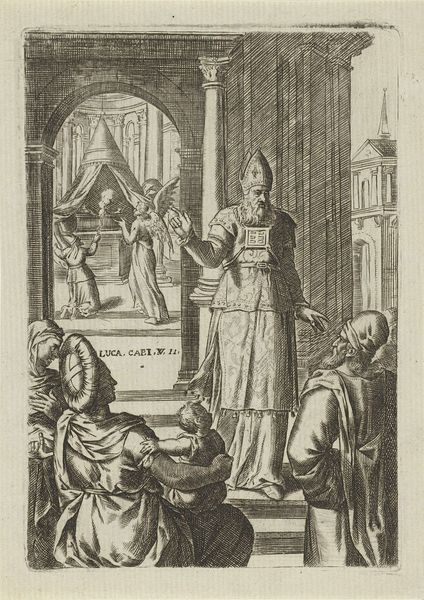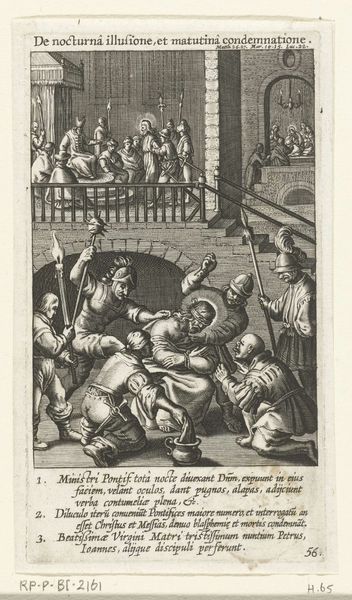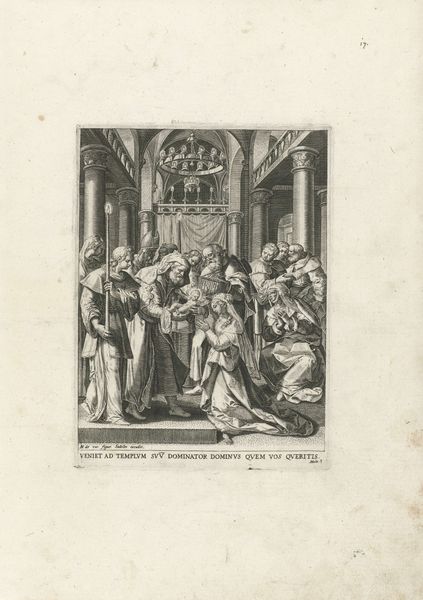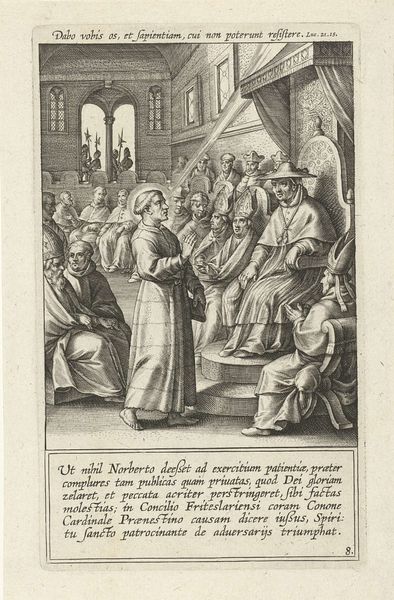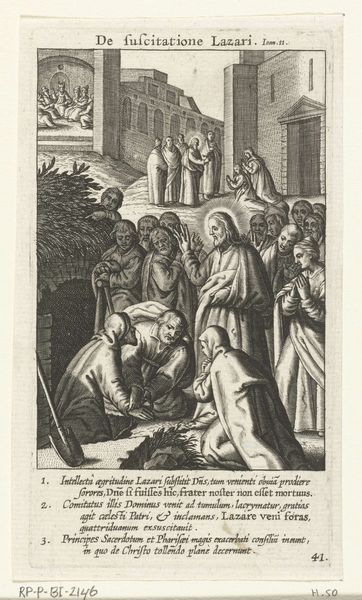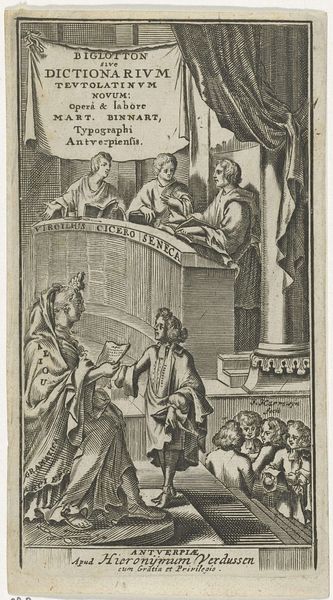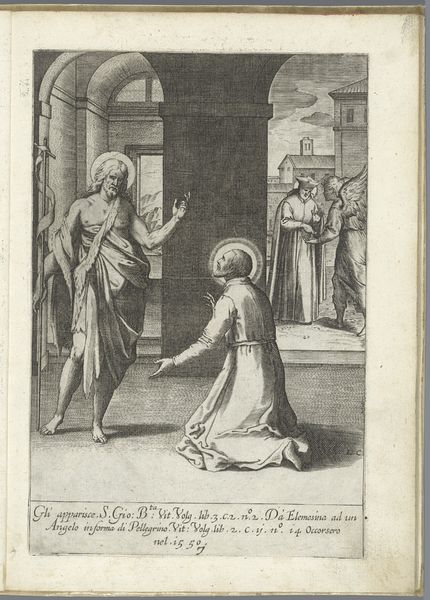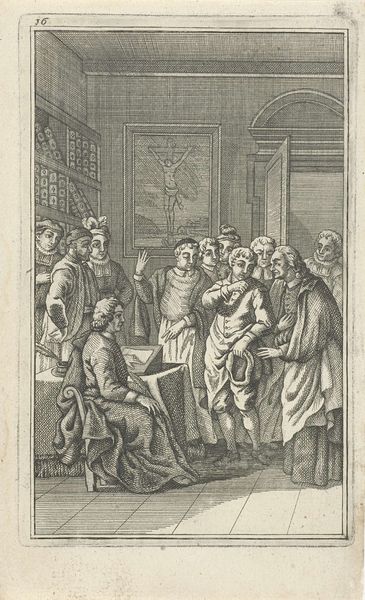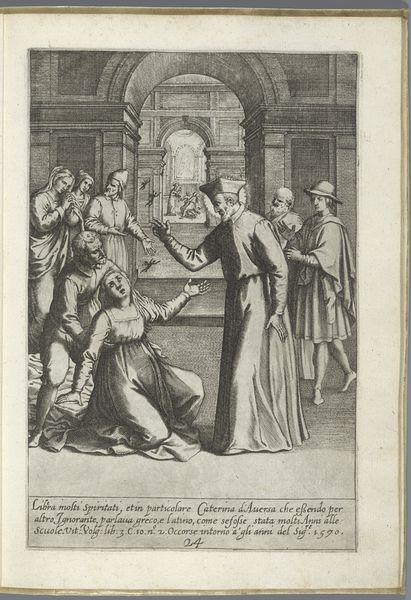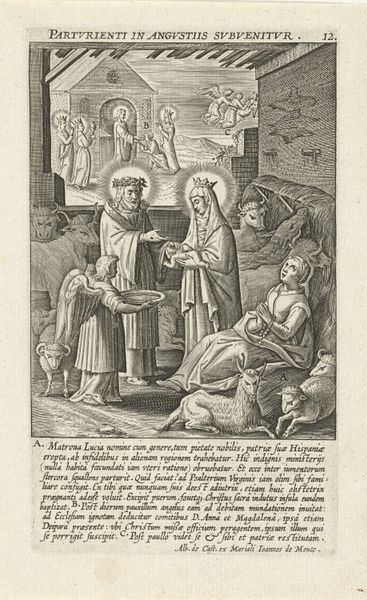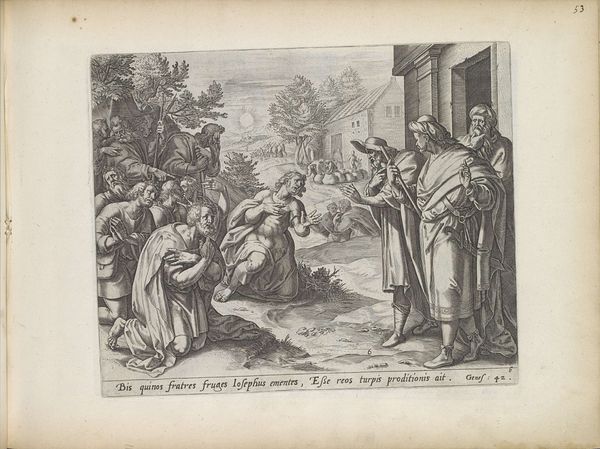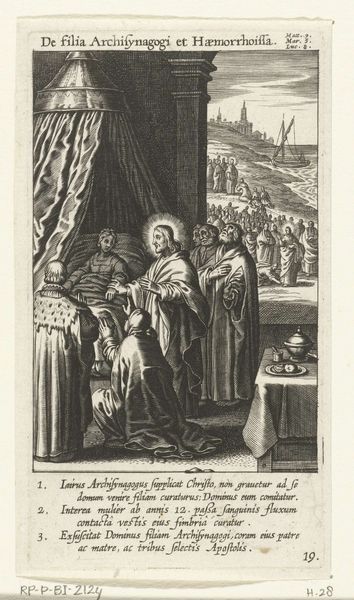
engraving
#
baroque
#
old engraving style
#
landscape
#
figuration
#
line
#
history-painting
#
engraving
Dimensions: height 361 mm, width 222 mm
Copyright: Rijks Museum: Open Domain
Editor: My first thought is...grief. A city in deep mourning rendered with incredible detail, so meticulous you feel the weight of it. Curator: Indeed. What we're observing is an engraving titled "Jona in Nineve," created between 1720 and 1728 by Joseph Mulder. Currently, it resides here at the Rijksmuseum. The artwork portrays the story of Jonah preaching repentance to the city of Nineveh. Editor: It's fascinating how Mulder translates this biblical tale into a visual language that feels almost...operatic. There's so much drama packed into this single frame. What do you think makes it feel that way? Curator: Well, I think the use of line is crucial here. The density and direction create these wonderfully expressive figures and suggest their collective despair but also hope. It also locates this piece firmly within the Baroque style with a bit of theatricality, wouldn’t you say? Editor: Absolutely, and that positioning feels important, doesn't it? Because we're not just seeing a depiction of grief, we’re witnessing a communal reckoning—the impact of power and prophecy. Curator: It raises questions about the responsibility of a messenger. Jonah embodies, for me, the reluctant prophet. The weight of his words changes everything within this small frame. Editor: The figures really showcase that. Notice the almost stylized posture of those in repentance, there are interesting poses of despair or grief in some. Do you get the sense of the burden that their sins and sorrow cause them as a form of self harm or something else? Curator: Very interesting reflection! It seems the artist is exploring guilt and seeking absolution within very codified gender and societal roles, it seems, too. Editor: Indeed. There’s so much in it for our present times when thinking about community responsibility. I love how artworks can show how much we repeat ourselves. Thanks to Mulder, it is definitely worth some consideration and more dialogue today. Curator: Yes! Indeed. We just need to tune our eyes and spirits towards listening with purpose and reflecting from that historical perspective. Thank you.
Comments
No comments
Be the first to comment and join the conversation on the ultimate creative platform.
